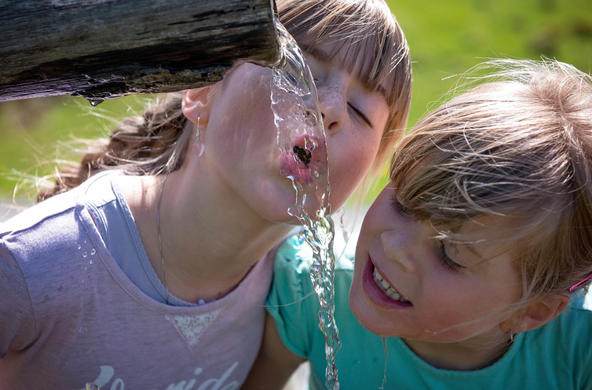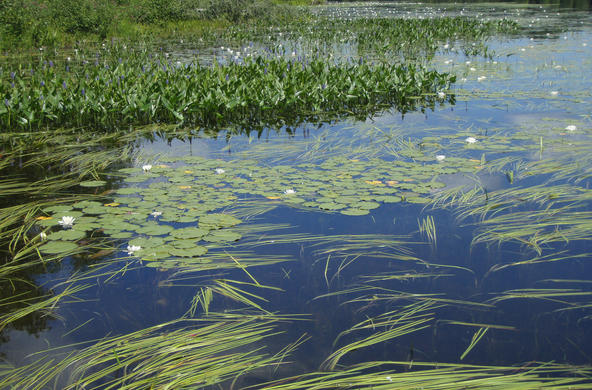When we think of the water cycle, most of us recall the diagram with arrows that we were taught in third grade. Rain falls on mountains, mountain streams flow to the ocean, sea water evaporates into atmospheric moisture, and the cycle repeats itself. Unless you live on a volcanic island, however, this idealized rendering reflects neither the origin of your local water nor how human development affects the water cycle.
Cary Institute educators Cornelia Harris and Kim Notin are working to develop a lesson plan for fifth graders that teaches a more accurate community-based model. Currently called "the broken water cycle," their curriculum takes into account human changes to a region’s water system, such as impermeable surfaces that decrease infiltration and increase runoff, depletion of groundwater aquifers, or pumping water long distances across watersheds.
The curriculum was tested in a year-long pilot program with Skip Hoover’s science class at Krieger Elementary School in Poughkeepsie. The effort was launched by asking questions like "Can rainwater get into your bathtub?" The answers they received displayed the eclecticism typical of that age group and ranged from a simple "no" to "yes, if there’s a leak in the ceiling." By the end of the program, however, the students could describe a much more realistic water cycle that was relevant to their lives in Poughkeepsie.
For students at Krieger, that means starting with the Hudson River, since Poughkeepsie is the southernmost municipality able to source its drinking water above the river’s tidal salt surge. They learned how their drinking water originates from the same river into which wastewater is discharged, and they visited the Poughkeepsie Water Treatment Facility to see how the water was treated to make it safe to drink.
Students learned how impermeable surfaces, such as pavement and roof tops, impact the way rainwater disperses by conducting an experiment in the school’s parking lot. Harris and Notin asked each student to make a map of the permeable and impermeable surfaces in their own neighborhood and then, using Google Maps, extrapolated the percentage of such surfaces in Poughkeepsie and estimated the amount of rainwater that infiltrated or that turned to runoff.
This school year, Harris and Notin will expand the curriculum from Hoover’s classroom at Krieger to all five elementary schools in the Poughkeepsie school district. A place-based curricula, they argue, engages students with locally relevant issues while teaching more sophisticated science concepts than traditional models.
Notin comments, "Reading about the water cycle, or any other natural phenomenon, should be coupled with observations and investigations. Take kids outside and have them pour water on blacktop, or the forest floor. Have them put plastic bags on branches and measure plant transpiration. This is how the water cycle becomes real, and this is how scientific skills can be achieved." Once gained, these skills can be applied to other local environmental issues.
Their "broken water cycle" module offers a framework that other science educators can adopt. Harris and Notin presented their approach to the National Science Teachers Association and the Science Teachers Association of New York State and received much positive feedback. They intend to publish the concepts and accompanying sample lesson plans in a peer-reviewed journal such as Science and Children.





